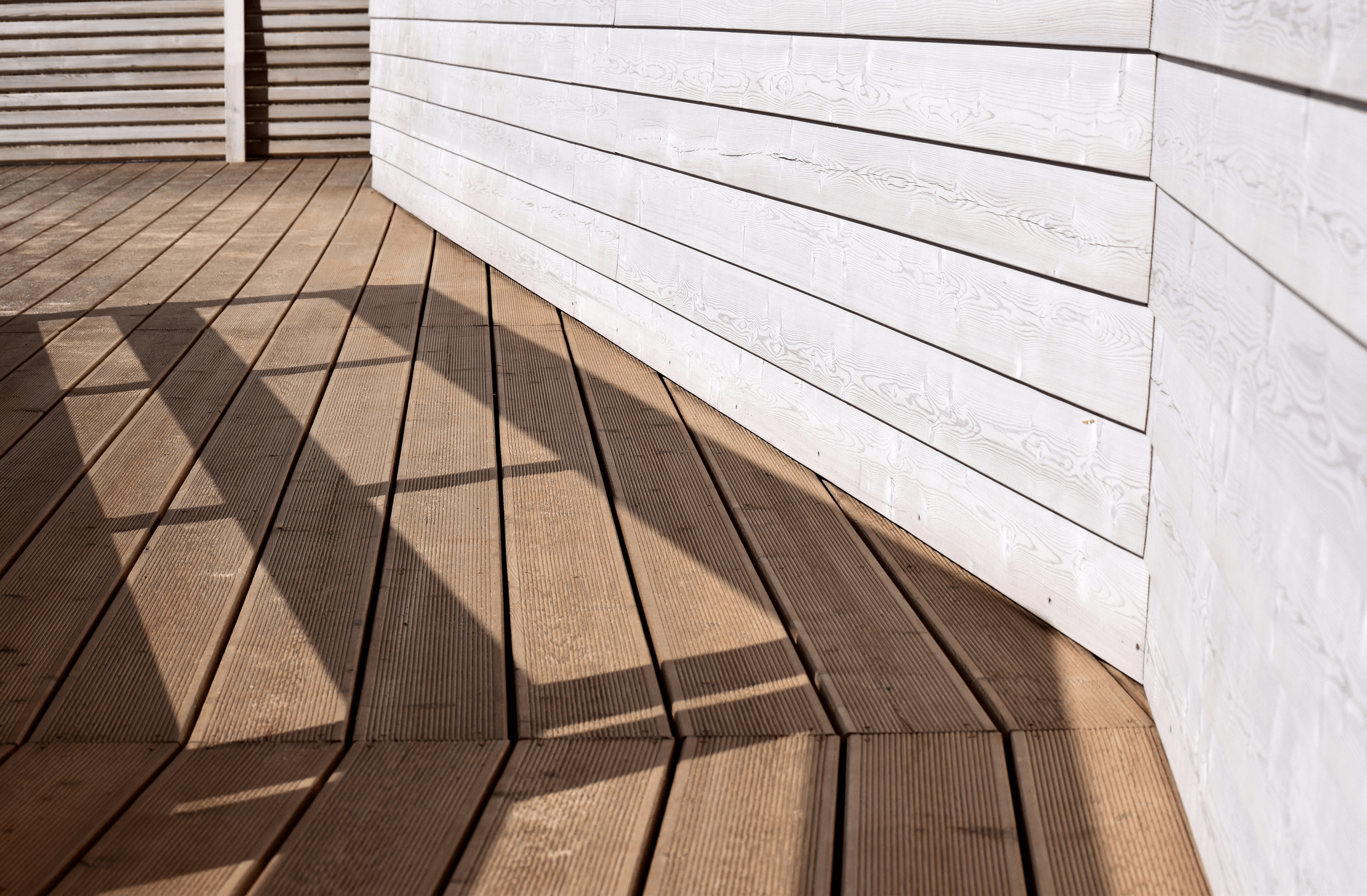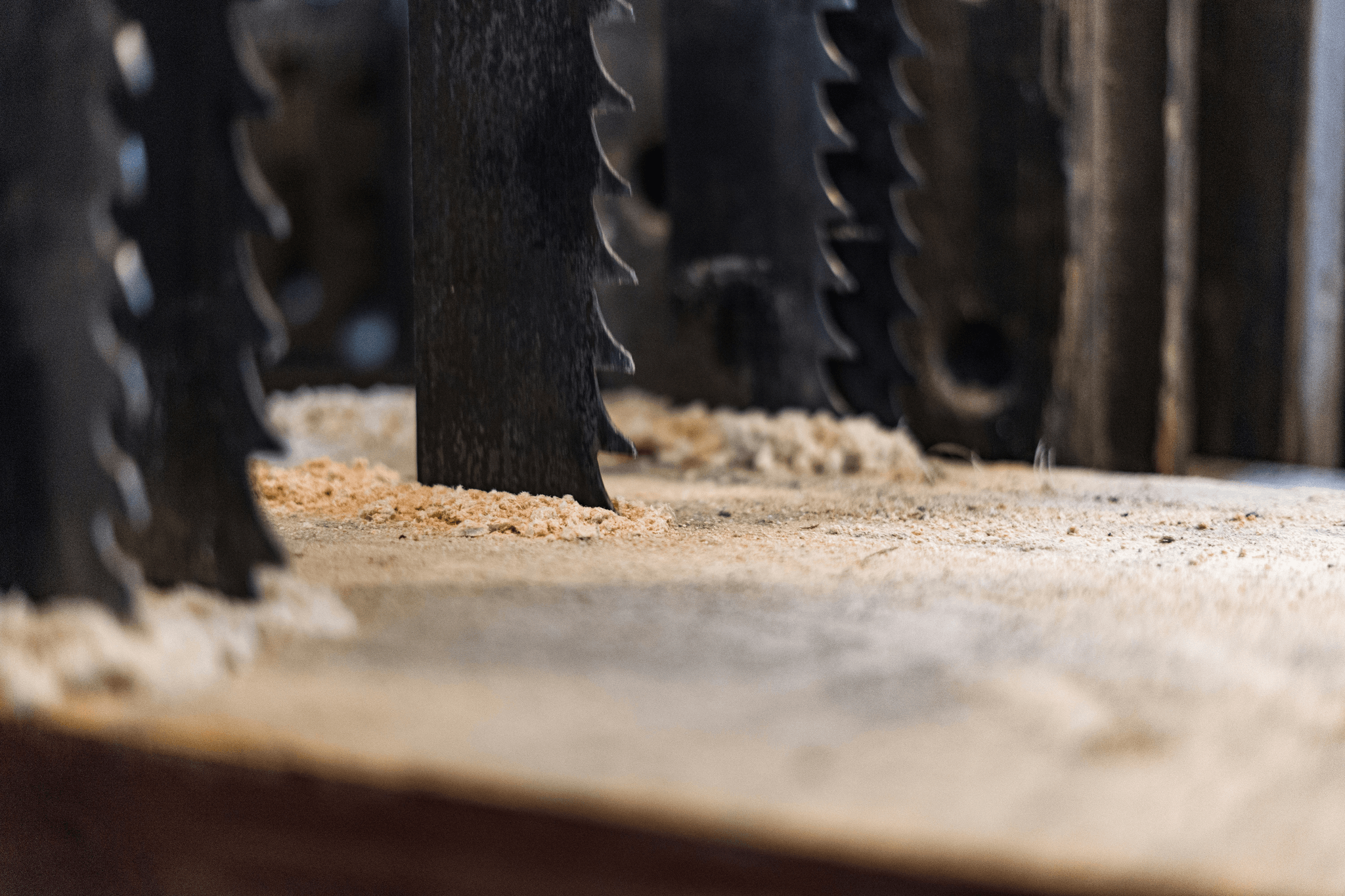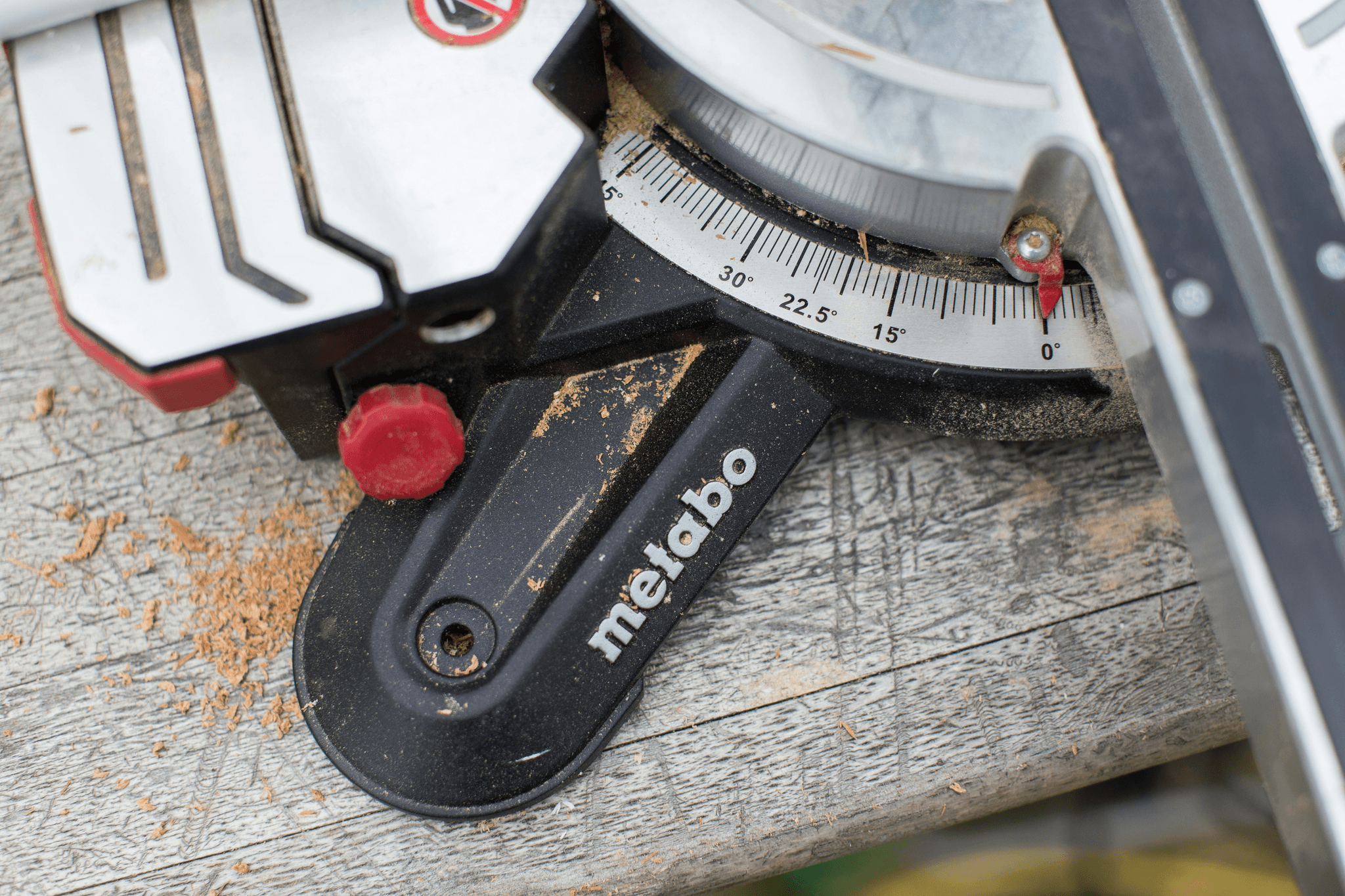Introduction
When it comes to installing or maintaining a composite deck, one of the most crucial decisions you'll make is selecting the right saw blade. Choosing the Right Saw Blade for Composite Decking can significantly impact both the quality of your cuts and the overall efficiency of your project. With various options available, understanding which features are essential for composite materials is key to achieving a clean and precise finish.
Choosing the Right Saw Blade for Composite Decking
Selecting a composite deck saw blade isn't just about grabbing any old blade off the shelf; it requires careful consideration of several factors. The right blade will help you avoid issues like chipping and splintering, which can ruin an otherwise perfect installation. Therefore, it's essential to understand what makes a saw blade suitable for cutting composite decking materials effectively.
Understanding Composite Decking Materials
Composite decking has become increasingly popular due to its durability and low maintenance requirements compared to traditional wood options. Understanding Composite Decking Materials involves recognizing that they are typically made from a blend of wood fibers and plastic, making them resilient yet requiring specific cutting techniques. This unique composition means that not all blades will perform equally well; thus, knowing your material is vital.
Features of Saw Blades for Composite Decking
When evaluating Features of Saw Blades for Composite Decking, several characteristics come into play—like tooth design, material quality, and specialized coatings that reduce friction during cutting. A well-designed blade will minimize heat buildup and improve overall cutting performance while reducing wear on both the blade and your saw itself. Additionally, features such as kerf width and cooling technologies can further enhance your cutting experience by ensuring precision and minimizing waste during your project.
Overview of Composite Decking

Composite decking has become a popular choice for homeowners looking to enhance their outdoor spaces with durability and style. This innovative material combines wood fibers and recycled plastics, offering the aesthetic appeal of traditional wood without the upkeep. Understanding composite decking materials is essential for selecting the right saw blade for your cutting needs, ensuring smooth and efficient results.
What is Composite Decking?
Composite decking is an engineered product made from a blend of wood fibers and plastic materials, designed to mimic the look of natural wood while providing enhanced durability. Unlike traditional lumber, composite decking resists rot, decay, and insect damage, making it a long-lasting option for outdoor use. When choosing the right saw blade for composite decking, it's crucial to understand its unique properties to achieve clean cuts without splintering.
Benefits of Composite Decking
One of the standout benefits of composite decking is its low maintenance requirements; no sanding or staining is needed like with traditional wood options. Additionally, it offers excellent resistance to fading and weather-related wear, ensuring your deck looks great year after year. With features like these in mind, it's clear why many homeowners are opting for composite materials when considering their outdoor projects.
Popular Brands like Trex and Composite Decking Inc
When discussing composite decking options, brands like Trex and Composite Decking Inc often come to mind as industry leaders known for quality products. Trex's offerings include various colors and textures that cater to diverse aesthetic preferences while promising durability that stands up against harsh conditions. By familiarizing yourself with these brands and their features—like specific formulations that affect cutting performance—you’ll be better equipped to select the ideal composite deck saw blade for your project.
Usual Blade Types for Composite Decking
Each type of saw blade has its own unique features that can significantly impact your project’s outcome. Understanding these usual blade types for composite decking will help you make an informed decision and ensure a clean, precise cut.
Circular Saw Blades
Circular saw blades are among the most popular choices for cutting composite decking materials. They offer versatility and portability, making them ideal for both large projects and smaller DIY tasks. When choosing a circular saw blade specifically designed for composite decking, look for features such as a fine tooth count and specialized coatings that reduce friction—key factors in achieving smooth cuts without damaging the material.
Using the right circular saw blade not only enhances performance but also minimizes wear on both the blade and the decking itself. A composite deck saw blade with appropriate thickness can further improve cutting efficiency while reducing kerf width, which is essential to minimize waste during your project. Remember, a well-maintained circular saw blade will provide cleaner cuts and extend its lifespan.
Miter Saw Blades
Miter saw blades are another excellent option when working with composite decking materials. These blades excel at making angled cuts, which are often required in deck building projects like creating picture frames or intricate designs around corners. A miter saw equipped with a high-quality composite deck saw blade ensures precision while maintaining the integrity of your decking boards.
When selecting a miter saw blade, consider one with cooling features to prevent overheating during prolonged use—this is especially important when cutting dense materials like composites. Additionally, pay attention to the thickness of the miter saw blade; thinner blades can create less kerf width resulting in reduced waste and more efficient use of your materials. Ultimately, using the right miter saw blade will lead to cleaner edges and improved overall aesthetics in your finished project.
Table Saw Blades
Table saw blades are perfect for larger pieces of composite decking due to their stability and power during operation. With an adjustable fence system, table saws allow you to make straight cuts effortlessly while ensuring uniformity across multiple pieces—a critical aspect when laying out an entire deck surface. Selecting a table saw blade designed specifically for composites helps you achieve optimal results without compromising on quality or precision.
For best results with table saws, focus on finding blades that feature low-friction coatings alongside appropriate tooth geometry tailored for cutting composites effectively. Blade thickness remains vital here; thinner options tend to produce less kerf width which translates into reduced material waste—an essential consideration if you're budgeting your resources wisely! And don't forget about cooling features; they play a significant role in maintaining performance during extended usage sessions.
Blade Thickness and Its Impact

When it comes to selecting the perfect composite deck saw blade, understanding blade thickness is crucial. The thickness of a saw blade can significantly influence both cutting performance and the overall quality of your project. In this section, we’ll dive into what blade thickness means, how it affects your cutting experience, and provide recommendations for working with composite decking materials.
Understanding Blade Thickness
Blade thickness refers to the width of the metal used in the construction of a saw blade. This measurement can range from thin blades designed for fine cuts to thicker blades that offer durability and strength for tougher materials. When choosing the right saw blade for composite decking, it's essential to consider how different thicknesses interact with various types of composite deck materials.
A thinner composite deck saw blade typically provides cleaner cuts but may struggle with durability during extensive use. Conversely, a thicker blade can handle more rigorous cutting tasks but might produce rougher edges if not used correctly. Understanding these nuances will help you select a saw blade that aligns with your project needs while keeping in mind features of saw blades for composite decking.
How Thickness Affects Cutting Performance
The impact of blade thickness on cutting performance cannot be overstated when working with composite decking materials. Thicker blades tend to create wider kerf widths, which means they remove more material during each cut—this can lead to increased waste if precision isn't maintained. On the flip side, thinner blades minimize kerf width, allowing for more efficient cuts and reduced waste.
However, using a thin composite deck saw blade on harder materials may result in binding or overheating due to insufficient rigidity during cuts. Therefore, balancing between thickness and material compatibility is key when considering usual blade types for composite decking projects. Remember that an optimal choice will not only enhance performance but also improve the longevity of your tools.
Recommendations for Composite Decking Cuts
For those embarking on a journey through the world of composite decking installation or renovation, selecting the right blade thickness is paramount to achieving high-quality results. A good rule of thumb is to opt for a medium-thickness saw blade specifically designed for composites—these typically range from 0.090” to 0.125” thick and strike an excellent balance between durability and precision.
Additionally, consider pairing your chosen composite deck saw blade with cooling features that help manage heat buildup during prolonged use; this will further enhance cutting efficiency and prolong tool life as well as maintain optimal performance across multiple cuts. Always keep in mind that proper maintenance plays an essential role in ensuring long-lasting effectiveness when using any type of saw blades tailored for composite decking projects.
Kerf Width and Material Waste

When working with composite decking, understanding kerf width is crucial for achieving clean cuts and minimizing waste. The kerf refers to the width of the cut made by a saw blade, which directly impacts how much material is lost during the cutting process. Choosing the right saw blade for composite decking involves considering this aspect to ensure efficiency and precision.
What is Kerf Width?
Kerf width is essentially the thickness of the material that gets removed when a saw blade makes a cut. In the context of composite decking, this measurement can vary depending on the type of saw blade used. A wider kerf means more material waste, which can be particularly frustrating when working with expensive composite materials.
Understanding kerf width becomes especially important when selecting your composite deck saw blade. Different blades have varying widths, so it’s essential to choose one that aligns well with your project requirements. The goal should always be to maximize usable material while achieving clean edges on your cuts.
Choosing the Right Kerf Width for Precision
Selecting an appropriate kerf width is vital for ensuring precision in your cuts and minimizing waste during your project. For instance, if you’re using thicker composite materials, opting for a thinner kerf can help reduce waste while maintaining accuracy in your cuts. Conversely, thicker blades may be better suited for certain applications where durability and strength are prioritized over minimal waste.
When choosing among usual blade types for composite decking, consider how each one's kerf will affect your cutting performance and overall project efficiency. A balance between precision and strength will yield better results as you work through various cuts in your decking project. Always remember that a well-chosen composite deck saw blade can lead to smoother finishes and less time spent on cleanup.
Minimizing Waste with Proper Blade Selection
To minimize waste effectively, it's essential to select a saw blade that not only fits your specific cutting needs but also matches the characteristics of the composite decking materials you’re using. Blades designed specifically for cutting composites often feature optimized kerfs that help reduce excess material loss during cutting sessions. This thoughtful approach allows you to make every inch count while crafting beautiful outdoor spaces.
Additionally, understanding features of saw blades for composite decking—such as tooth design and spacing—can further enhance cutting efficiency while reducing waste production significantly. By investing time into researching these factors beforehand, you’ll find yourself with more usable materials at hand after each cut—saving both money and effort in future projects!
In summary, focusing on kerf width when selecting blades ensures cleaner cuts with less wasted material—an invaluable consideration when choosing the right saw blade for composite decking projects.
Cooling Features in Saw Blades
When it comes to cutting composite decking, cooling features in saw blades can make a significant difference. The heat generated during the cutting process can lead to material melting or warping, especially with composite materials that often contain plastic components. Thus, understanding the cooling features of a composite deck saw blade is crucial for achieving clean cuts and prolonging the life of your blade.
Importance of Cooling Features
Cooling features are essential for maintaining optimal performance when working with composite decking materials. Without proper cooling, blades can overheat, leading to premature wear and tear on both the blade and the material being cut. Furthermore, excessive heat can compromise the integrity of the cut edges, resulting in unsightly finishes that may require additional sanding or trimming.
Types of Cooling Technologies
There are several types of cooling technologies commonly integrated into saw blades designed for composite decking. Some blades feature specialized coatings that dissipate heat more effectively, while others may include ventilation slots that promote air circulation during cutting. Additionally, some manufacturers offer blades with built-in cooling channels that help reduce friction and maintain a consistent temperature throughout the cutting process.
How Cooling Features Benefit Composite Cutting
The benefits of incorporating effective cooling features into your choice of saw blade cannot be overstated when working with composite materials. By reducing heat buildup, these features help maintain sharpness longer and ensure smoother cuts without damaging the decking material itself. Ultimately, choosing a composite deck saw blade with advanced cooling technology not only enhances performance but also increases efficiency by minimizing downtime spent on replacing or sharpening worn blades.
Conclusion
When embarking on a project involving composite decking, understanding the nuances of the composite deck saw blade is crucial. Choosing the Right Saw Blade for Composite Decking can significantly enhance your cutting experience and ensure clean, precise results. By grasping the Features of Saw Blades for Composite Decking, you can make informed decisions that will lead to successful outcomes.
Summary of Key Blade Features
In summary, selecting the right composite deck saw blade involves considering several key features. The Usual Blade Types for Composite Decking, such as circular saw blades, miter saw blades, and table saw blades each have unique advantages tailored to different cutting needs. Additionally, factors like Blade Thickness and Kerf Width play pivotal roles in determining cutting efficiency and material waste; opting for blades with appropriate cooling features further enhances performance while reducing overheating during use.
Tips for Maintaining Your Saw Blade
To ensure your composite deck saw blade remains in peak condition, regular maintenance is essential. Keep the blade clean by removing any debris or resin buildup after each use; this helps maintain its sharpness and prolongs its life. Furthermore, periodically check for signs of wear or damage—addressing issues early can save you from more significant problems down the line while ensuring optimal performance when working with Understanding Composite Decking Materials.
Choosing the Best Blade for Your Project
Choosing the best blade for your project goes beyond merely picking one off a shelf; it requires an understanding of your specific needs and materials involved. Consider factors like Blade Thickness and Kerf Width alongside cooling features to select a blade that not only meets but exceeds expectations during installation or repairs on composite decking projects. With careful consideration and a bit of research into Usual Blade Types for Composite Decking, you’ll be well-equipped to tackle any project with confidence.
